The aster plant (Aster) is represented by herbaceous annuals and perennials, and it belongs to the family Compositae, or Aster. According to information taken from various sources, this genus unites 200-500 species, with most of them naturally occurring in Central and North America. The plant came to Europe in the 17th century; it was brought secretly from China by a French monk. The name aster from Latin is translated as "star". There is a Chinese legend about this flower, which says that 2 monks decided to reach the stars, they climbed higher and higher to the highest mountain in Altai, after many days they ended up at the top, but the stars still remained distant and inaccessible. Exhausted by the hard road without food and water, they returned to the foot of the mountain, and a beautiful meadow with wonderful flowers opened up to their eyes. Then one of the monks exclaimed: “Look! We were looking for stars in the sky, and they live on earth! " Having dug up some bushes, the monks brought them to the monastery and began to grow them, and it was they who gave them the star name "asters". Since that time, such flowers in China have become a symbol of elegance, charm, beauty and modesty. Aster is a flower of those who were born under the sign of Virgo, a symbol of the dream of the unknown, a guiding star, a talisman, a gift from God to man ...
Content
Brief description of cultivation
- Sowing... In open soil, seeds are sown in early spring (in March) or before winter, and for seedlings from mid to late March. Seedlings are planted in the garden in April or May.
- Bloom... In summer and autumn.
- Illumination... Well lit or shaded place.
- Priming... Nutritious loamy soil, cultivated to a depth of about 20 centimeters.
- Watering... Moderate. On hot days, watering should be done more rarely, but more abundantly.
- Fertilizer... You need to feed the aster three times throughout the season: 7 days after the seedlings appear, during the bud formation period and when flowering begins.
- Reproduction... Annual species and varieties are propagated only by seed, while perennials, as a rule, vegetatively, namely, by cuttings and dividing the bush.
- Harmful insects... Drooling pennies, spider mites, leaf and root nematodes.
- Diseases... Powdery mildew, ring spot, gray flower rot, verticillium wilting and viral jaundice.
Aster features
Aster is a rhizome plant with simple leaf blades. Baskets-inflorescences are part of corymbose or panicle inflorescences. Baskets consist of marginal reed flowers of various colors, as well as central tubular flowers, which are very small and most often have a yellow color. In European countries, aster began to grow in the 17th century, and thanks to the tireless work of breeders, a lot of incredibly beautiful varieties were born, while among them there are plants with flowers of various shapes and colors. Typically, the seed method is used to propagate such a plant. Depending on the height of the shoots and the quality of the baskets, such flowers are used for group plantings, borders, rockeries, rabatok, or as decoration for terraces and balconies. Asters make spectacular bouquets, and cut flowers can stand for a long time.
Growing asters from seeds
When to sow seeds outdoors
The most popular among gardeners is seed reproduction. Asters can be grown both in a seedless way and through seedlings. Sowing in open ground of early varieties is carried out at the beginning of the spring period, or rather, in the first half of March, then the bushes will begin to bloom in July. Middle and late varieties are sown in the ground in the last days of April or in the first days of May, but at the same time the air temperature should not fall below 10 degrees. However, remember that flowers that were not grown through seedlings begin to bloom a little later than greenhouse bushes.
Seeds are sown in not very deep grooves (depth about 40 mm), after which they are well shed. And then the grooves are covered with earth, and when dry weather sets in, the surface of the site is sprinkled with a layer of mulch, or instead the crops can be covered with a covering material, which is removed immediately after the seedlings appear. After that, it is necessary to cover crops only when there is a threat of frost. Thinning of seedlings is carried out during the formation of the second or third true leaf plate in the plants, while a distance of 10 to 15 centimeters must be observed between the seedlings. Excess plants can be transplanted to another site.
After sowing, early varieties begin to bloom after 90 days, mid-early ones - after 110 days (in the first days of August), late ones - after 120–130 days (in the last days of August or in the first half of September). In this regard, choosing a particular variety, you can calculate when it will bloom. The flowering of late varieties can continue until the first severe frosts.
Sowing seeds in open soil can be carried out both in spring and late autumn. In this case, they are sown in frozen soil in grooves made in advance. Podzimny sowing is good because the plants grown next year are very resistant to fusarium. After the seedlings appear in the spring, they should be thinned. When choosing a seed, it should be taken into account that the high germination rate of aster seeds remains during the first two years, and then it decreases by about half.
Sowing seeds for seedlings
Most experienced gardeners prefer to grow asters through seedlings, as this method is more reliable. Sowing time for seedlings depends on the variety and varies from the first days of April to May. When 7 days remain before sowing, the seed must be wrapped in a piece of cloth, after which it is placed in a pinkish solution of potassium permanganate. After 10–12 hours, the fabric is wrung out so that no water flows from it, after which it is placed in a polyethylene bag and removed for germination in a place where it is always warm.
A pot or box is suitable for sowing seeds.The substrate should be taken nutritious and light, before sowing it must be spilled with a solution of a fungicidal preparation. Make furrows in the soil mixture, and then evenly distribute the seeds in them, which should already be baked. The grooves are covered with a half centimeter layer of sand, then the crops are watered with a pinkish solution of potassium permanganate, using a small sieve for this. Then the container is covered with glass (film) on top and removed to a warm place (from 20 to 22 degrees). In the event that the seed is fresh (collected last season), then the seedlings may appear after only 3-5 days. As soon as this happens, crops must be harvested in a cool place (about 16 degrees). When the plants have 3 or 4 true leaf plates, they need to be cut out according to a 4x4 centimeter scheme. During the pick, it is necessary to carry out the obligatory shortening of the aster roots. For transplanting, a substrate is used, combined with a small amount of wood ash. Planted plants need moderate watering.
Landing in open ground
When 7 days have passed after the pick, the asters will need feeding with a solution of complex fertilizer. Then the bushes are systematically fed once a week with the same fertilizer until they are planted in the garden. When the seedlings grow up and get stronger, they need to start hardening, for this they are transferred to the street every day, while the duration of such procedures should be increased gradually. If done correctly, when the time comes to plant asters in the garden, they will have a powerful stem with 6-8 large green leaf plates. Experts advise transplanting seedlings into open soil in April or May. Such a plant is resistant to frost, and it is able to withstand a decrease in temperature at night to 3-4 degrees. It is recommended to disembark in the evening.
Landing rules
Before you start planting seedlings, you need to choose the most suitable site. It should be sunny and well-drained. The best predecessors of such a culture are calendula and tagetes. These flowers grow very well on nutritious light neutral soil. The site for aster must be prepared in advance. To do this, in the autumn, they carry out a deep digging of it with the simultaneous introduction of compost or humus (for 1 square meter of the site from 2 to 4 kilograms). In spring, the site is dug up again, while 15–20 grams of potassium salt, 20–40 grams of superphosphate and 15–20 grams of ammonium sulfate per 1 square meter are added to the soil. If the soil on the site is saturated with nutrients, then it is not necessary to apply fertilizers to it.
Before the planting of seedlings, the site is weeded, its surface is leveled and loosened to a depth of 40 to 60 mm. It is also recommended to moisten the soil, especially if the aster seedlings are purchased and you do not know how long the root system of the bushes has been open. Make not very deep grooves and spill them with water, and then asters are planted in them, keeping a distance between the bushes of at least 20 centimeters, while the distance depends on the variety of asters. The row spacing should be approximately 50 centimeters. The grooves are covered with dry soil, while the planted flowers do not need watering for 2-4 days from the moment of planting. After 7-15 days, the flowers will need fertilizing with nitrogen-containing fertilizers.
Garden aster care
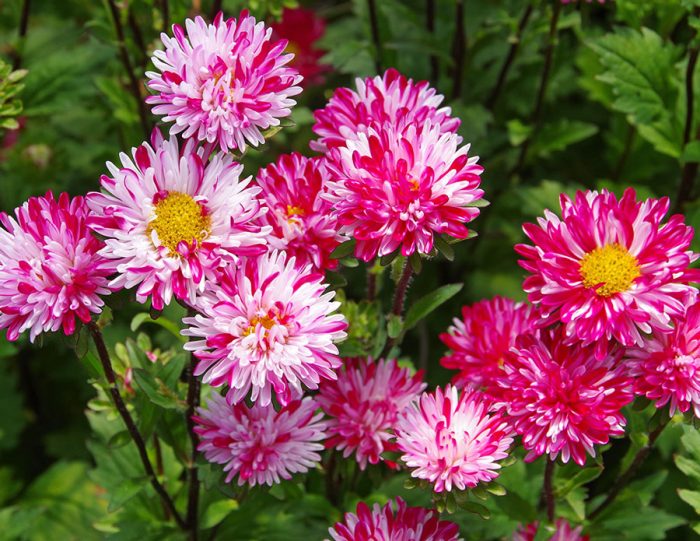

Aster is an unpretentious plant, so it is quite easy to grow it in your garden. The most important thing to remember is to loosen the soil surface in a timely manner, while removing all weeds. It is necessary to loosen the soil surface near the bushes every time watering is carried out or it rains, while the depth of loosening should not exceed 40–60 mm.Even before the bushes begin to branch, they should be earthed to a height of 60 to 80 mm, in which case their root system will develop much faster.
Watering
Aster is one of those plants that react extremely negatively to both dry soil and stagnation of liquid in it. During a long dry and hot period, watering should become more rare, but abundant (about 30 liters of water per 1 square meter of land), after this procedure it is imperative to loosen the soil surface. If the soil dries up, then because of this, the inflorescences may become less effective.
Top dressing
In order for the bushes to be powerful and as decorative as possible, they will need systematic feeding. During one season, such flowers must be fed at least three times:
- first feeding - 7-15 days after transplanting into the garden, for this, 10 grams of potassium sulfate, 20 grams of ammonium nitrate and 50 grams of superphosphate are added to 1 square meter of the plot;
- second - at the beginning of budding, for this, 50 grams of superphosphate and the same amount of potassium sulfate are introduced into the soil per 1 square meter;
- third - as soon as flowering begins, the same fertilizers are used for this as for the second feeding.
Do not forget to remove inflorescences that have begun to fade in time.
Possible problems
As a rule, inexperienced gardeners may have problems growing asters in their garden. For example:
- After sowing, the seedlings did not appear or they appear, but grow very slowly and dry... In this case, experts advise reseeding, while strictly observing all agrotechnical rules. Particular attention should be paid to the composition of the substrate, and also to the pre-sowing preparation of the seed.
- Annuals are affected by Fusarium... Remember that plots of the Solanaceae family (tomatoes, potatoes) or flower crops such as carnations, tulips, gladioli and levkoi are not suitable for planting such flowers. These areas can be used for growing asters only after at least 5 years, as the likelihood that they will be affected by Fusarium increases. For the same reasons, fresh manure is not used for feeding the bushes.
- Formed inflorescences are incomplete... This can happen due to the fact that spider mites or aphids have settled on the bushes, they feel a lack of nutrients or due to non-compliance with the agrotechnical rules of culture.
Diseases of asters
Fusarium
Most often, such a culture is affected by Fusarium. The causative agent of this disease are fungi of the genus Fusarium. Symptoms of defeat appear in an adult bush, so it suddenly begins to wither, and only from one side, after which its yellowing, browning and wilting begins. To date, experts have not found an effective method of combating fusarium, in this regard, it is extremely important to observe preventive measures, namely, to follow the rules of crop rotation and crop rotation on the site. On one site, the aster should be planted alternately with other crops, while it will be possible to plant it again on it no earlier than after 5 years. All affected bushes are dug up and destroyed immediately after they are found, this will help prevent the spread of the disease.
Blackleg
Asters can also be affected by another fungal disease called "black leg". As a rule, the bushes are affected by it during the seedling period, the diseased plant darkens, and its root collar and the base of the stem begins to rot. The development of the causative agent of such a disease is observed on acidic soils. All affected bushes must be pulled out and destroyed, the soil mixture is spilled with a solution of potassium permanganate (1%), and the surface of the substrate around the seedlings is sprinkled with a layer of sand.
Rust
Such flowers can also be struck by rust, while swelling forms on the seamy surface of the leaf plates, inside which spores are contained. The foliage on the affected bushes begins to wither and dry out.The area where asters grow should be located as far as possible from conifers, since most often it is from them that rust spores fall on the bushes. For preventive purposes, treat the plants with a solution of Bordeaux mixture (1%), and diseased bushes should be treated with the same remedy once every 7 days.
Jaundice of asters
This plant can also infect a viral disease called aster jaundice. It is caused by a virus carried by leafhoppers or aphids. At the very beginning, the color of the foliage becomes lighter, and then general chlorosis of the leaf plates sets in, the bush begins to grow more slowly. The buds also develop poorly, which, moreover, are painted in a pale green color. In order to prevent the disease from affecting the bushes, it is necessary to fight its carriers, for this the bushes are treated with a solution of an insecticidal preparation, for example: Pyrimor, Aktellik or Pyrethrum. In this case, diseased bushes are dug up and destroyed.
Bushes affected by verticillosis or powdery mildew are recommended to be treated with Fundazol.
Aster pests
Asters can be harmed by insects such as meadow bugs, slobbering pennits, plowed slugs, common earwigs, spider mites, kidney aphids and scoops. In order to protect such flowers, you need to adhere to a number of preventive measures:
- in the fall it is imperative to carry out a deep digging of the site;
- the site is cleared of the remnants of annual plants and perennial stems, which die off by autumn, while it is recommended to destroy them;
- choose the right varieties of flower crops for your garden plot;
- if necessary, improve the soil by adding compost and humus or liming;
- observe the recommended distance between the bushes, otherwise they will be elongated and weakened.
If you still notice harmful insects on the flowers, then get ready to fight them either by chemical means or by folk methods. To destroy the plowed slug, you can use the Metaldehyde agent or it is collected by hand, and then destroyed. Fundazole treatment will help in the fight against the common earwig. To get rid of scoops, meadow bugs, slobbering pennits and spider mites, you need to use a solution of Phosphamide, Karbofos or Pyrethrum.
Post-flowering care
Winter sowing
When the flowering of annual (garden) asters ends, it is recommended to remove the bushes from the soil and destroy them, since pathogenic microorganisms or pests could settle on them. The seeds of asters collected by you, after the first frost, can be sown into open soil, but for this you should choose another site. Sowing seeds is carried out in pre-prepared grooves, which are then covered with humus or peat. Some gardeners carry out podzimny sowing in December or January immediately in the snow. To begin with, crush the snow in the selected area and make grooves in it in which the seeds are sown, do not forget to fill them with peat on top. The advantage of sowing seeds in the snow is that thaws cannot harm them. In spring, when the snow cover melts, it is recommended to cover the area from above with a film, which contributes to the faster appearance of seedlings.
Seed collection
In order to collect the seed, you need to wait until the inflorescence withers on the bush of the variety that you really like. You can cut it off after its middle darkens and a white fluff forms in it. The cut inflorescence must be put in a paper bag, where it can dry out. Do not forget to write the variety and date of collection on the bag.
Please note that seeds harvested last season have the best germination. And the seed that has been stored for 2 years or longer, sharply loses its germination.
Wintering of perennials
In the same area, perennial asters can be grown for 5 years.As a rule, it is in the autumn time that it is recommended to dig out, divide into parts and plant in a new place bushes of asters that have reached the age of 5 years. During transplanting, try not to injure the plant's root system.
Such perennials are highly resistant to frost; therefore, they can easily winter in open soil. However, in some varieties, it is still better to cover young bushes for the winter with foliage, peat or spruce branches. Before covering the site, you must cut off all the dried stems of asters. With the onset of spring, the shelter from the site is removed, as a result of which the bushes will move faster and bloom earlier.
Types and varieties of asters with photos and names
Relative of asters
Not every gardener will be able to figure out the aster in front of him or not. The fact is that there is a genus of asters, which is represented by perennial and annual species and varieties, they were discussed above. And there is also the so-called garden aster, which inexperienced gardeners mistake for an annual aster, but this is just a close relative of this plant. The annual aster would be more correctly called Callistephus - this is a monotypic genus of flowering plants, whose homeland is China, it belongs to the Asteraceae or Asteraceae family. Callistephus is represented by annuals and biennials, gardeners call such a plant "garden aster", or "Chinese aster". A description of this only species of the genus was given by Karl Linnaeus in 1825, and he called it Aster chinensis, A. Cassini after a while isolated it as a separate genus and gave it the name Callistephus chinensis, or Chinese callistemma. Simple or branched shoots are colored green, less often - dark red. The fibrous root system is well branched and powerful enough. Alternate leaf plates have petioles. Inflorescences are represented by baskets, and the fruit of such a flower is achene. There are about 4 thousand varieties of such a plant in culture, all of them are divided into about 40 groups. Most often, it is such a plant that is cultivated by gardeners and is taken for an annual aster.
Early flowering perennial asters
Perennial asters are divided by flowering time into a couple of groups, namely: autumn flowering and early flowering. There are not very many early flowering asters, and this group includes only the following species: alpine aster (Aster alpinus), Bessarabian aster (Aster bessarabicus) and Italian aster (Aster amellus).
Alpine aster
Such perennials, blooming in May, can reach a height of 15-30 centimeters. In diameter, single baskets reach 50 mm, outwardly they are similar to simple daisies. They are often used for rockeries. The best varieties:
- Glory - the bush reaches a height of about 25 centimeters, the diameter of the inflorescence is up to 40 mm, bluish-blue chamomile with a bright yellow center;
- Wargrave - the height of the bush is about 0.3 m, in May-June it is decorated with pink inflorescences with a yellow center, which reach 40 mm in diameter.
Italian aster, or chamomile
Blooming is observed in June – July. Plant height is about 0.7 m, large inflorescences-shields in diameter reach up to 50 mm. These flowers are suitable for rockeries and rocky gardens. The best varieties:
- Rosea - the color of the tubular flowers is brownish, and the reed flowers are pink, flowering begins in June and lasts about 3 months;
- Rudolf Goeth - in diameter, large scutes reach 40-50 mm, their tubular flowers are yellow, and the reed flowers are purple.
Aster Bessarabian, or false Italian
The height of the bush is about 0.75 m, it is decorated with a large number of lilac flowers with a pale brown center.
Autumn flowering perennial asters
Autumn-flowering perennial asters are represented by shrub aster, New Belgian aster and New England aster.
Shrub aster (Aster dumosus)
These are the earliest of the autumn-flowering asters. This plant comes from North America. The height of the bush can vary from 0.2 to 0.6 m.The shoots are strongly leafy, so even when the bushes are not blooming, they still look impressive and very similar to boxwood bushes. The best varieties:
- Niobe and Alba Flore Plena - the color of the inflorescences is white;
- Blue Bird - the height of the dwarf plant is about 0.25 m, the inflorescences are pale blue, like the taller Blue Bouquet and Lady in Blue.
New Belgian aster (Aster novi-belgii), or virginian aster
Such a plant is widespread in mid-latitude gardens. There are vigorous varieties, the height of which is about 1.4 m, as well as dwarf - bushes no higher than 0.3–0.4 m. Powerful bushes adorn paniculate inflorescences. Flowers can be painted in white, blue and purple, as well as in various shades of burgundy and pink. The best varieties:
- Snowsprite - the height of the dwarf variety is about 0.35 m, the color of the inflorescences is white;
- Jenny - the height of the dwarf bush is about 0.3 m, it is decorated with red flowers;
- Audrey - also a dwarf variety about 0.45 m high with pink inflorescences;
- Royal velvet - the height of a medium-sized bush is about 0.6 m, the color of the flowers is violet-blue;
- Winston S. Churchill - medium-sized variety about 0.7–0.75 m high, bright ruby flowers;
- Dusty Rose - the height of a vigorous bush is about 100 cm, light crimson inflorescences reach about 40 mm in diameter;
- Desert Blue - this vigorous variety can also reach a height of about one meter, the diameter of the inflorescences is about 35 mm, and their color is bluish-lilac.
New England aster (Aster novae-angliae), or North American
This plant is also very popular with mid-latitude gardeners. Unlike other perennials of the genus of asters, in such a plant, the height of the shoots can reach 1.6 meters. Outwardly and in structure, such a plant is in everything similar to the New Belgian aster. The flowering is very lush, while the inflorescences are small. The best varieties:
- Browmann - the bush reaches a height of about 1.2 m, the diameter of racemose inflorescences is about 40 mm, the color of the reed flowers is purple, lush flowering begins in September;
- Constance - a frost-resistant plant is up to 1.8 m high, branchy shoots are very powerful, inflorescences reach 35 mm in diameter, the color of the reed flowers is purple, and the tubular ones are yellow or brown, flowering is observed in September;
- Septemberrubin - the height of the bush is about 150 cm, in the diameter of the inflorescences reach up to 35 mm, the color of the reed flowers is pinkish-red.
Annual asters
Chinese aster, or garden aster, or callistephus is an annual, which is a close relative of the perennial aster. Today, there are more than 4 thousand varieties of such a plant. It happens that such annuals are more similar not to asters, but to chrysanthemums, dahlias, peonies and other flowering plants. Many scientists have tried to create a classification that would include all the variety of varieties. However, no one was able to create a perfect classification. Below will be given a brief description of the most famous classifications.
All varieties are divided by flowering time into:
- early - flowering begins in July;
- medium - the beginning of flowering occurs in the first days of August;
- late - flowering begins in the second half of August.
The varieties are divided into 5 groups according to the height of the stems:
- dwarf - no higher than 0.25 m;
- undersized - the height of the bush does not exceed 0.35 m;
- medium-sized - about 0.6 m;
- vigorous - the plant reaches a height of 0.8 m;
- giant - bushes higher than 0.8 m.
All varieties are also divided into 3 groups according to the purpose of growing:
- casing - not very tall compact bushes, they can be grown as potted plants or decorated with flower beds;
- cut-off - vigorous bushes adorn large inflorescences on long peduncles;
- universal - medium-sized compact bushes have large inflorescences and long peduncles.
There are 3 groups of asters according to the structure of inflorescences:
- tubular - only tubular flowers are part of the inflorescence;
- transitional - the inflorescences have 1 or 2 rows consisting of reed flowers, while the tubular flowers are collected in the middle;
- ligulate - the inflorescences consist either only of reed flowers, or they completely overlap the tubular ones.
According to the principle of the structure of inflorescences, the reed group is divided into several types. Non-double simple:
- Edelweiss, Pinocchio, Waldersee - these varieties have very small inflorescences;
- Salome - the inflorescence has an average size;
- Rainboy, Margarita - inflorescences are large;
- Madeleine, Zonenstein - the inflorescences of these varieties are very large.
Coronal:
- Ariake, Tikuma - inflorescences are very small;
- Aurora, Prinetta, Laplata - medium size of inflorescences;
- Princess, Anemone-shaped aster, Ramona - large inflorescences;
- rfordia, Giant Princess, Fantasy - very large inflorescences.
Semi-double:
- Victoria, Matsumoto - bushes adorn small inflorescences;
- Mignon, Rosette - the size of the inflorescences is average.
Curly:
- Comet, Tiger Pavz - medium-sized inflorescences;
- Ostrich feather, Queen of the market - these varieties have large inflorescences;
- aster Chrysanthemum, California gigantic.
Spherical or spherical:
- Milady, Lido, Triumph - the size of the inflorescences is medium;
- American beauty, Germany, pion-shaped aster - the inflorescences are large;
- Spherical - the inflorescences are very large.
Traned:
- Voronezh, Victoria, Thausendschen - medium-sized inflorescences.
Needle:
- Record, Exotic - medium-sized inflorescence;
- Riviera, Star - the size of the inflorescences is large;
- Compliment, Risen, Jubilee - very large inflorescences.
Hemispherical:
- Miss, Amor, Rosovidnaya - the size of the inflorescences is average;
- pompom - large inflorescences.
Despite the fact that flowers can be painted in a wide variety of color shades, there is no classification for this characteristic. They are painted in various shades of blue, lilac, pink, white, purple, cream or pink. There are also varieties of two-tone color. However, today there are no varieties with orange and green flowers.
As mentioned above, so far there is not a single classification that would be perfect, all the more if we take into account that a large number of new diverse varieties are born every year.

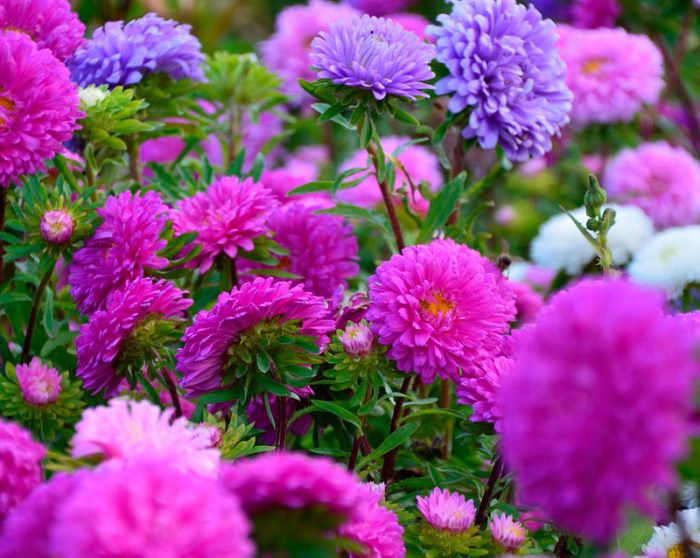
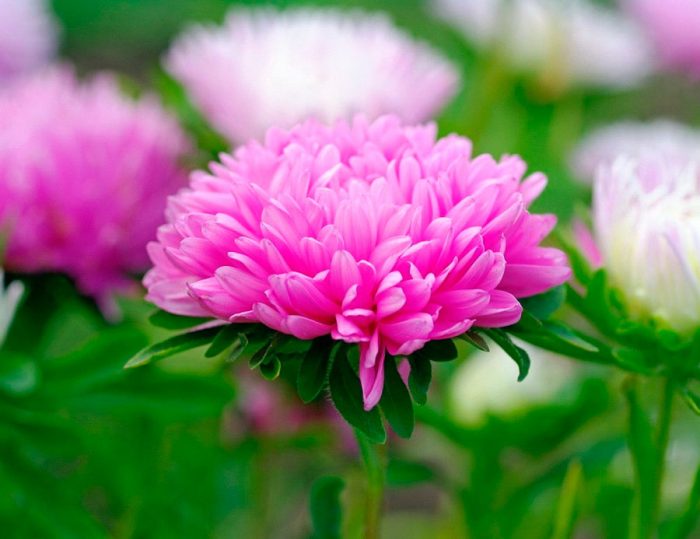
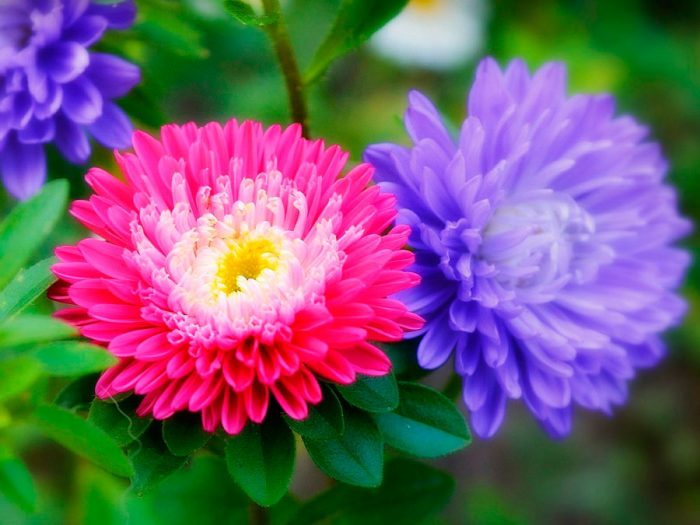
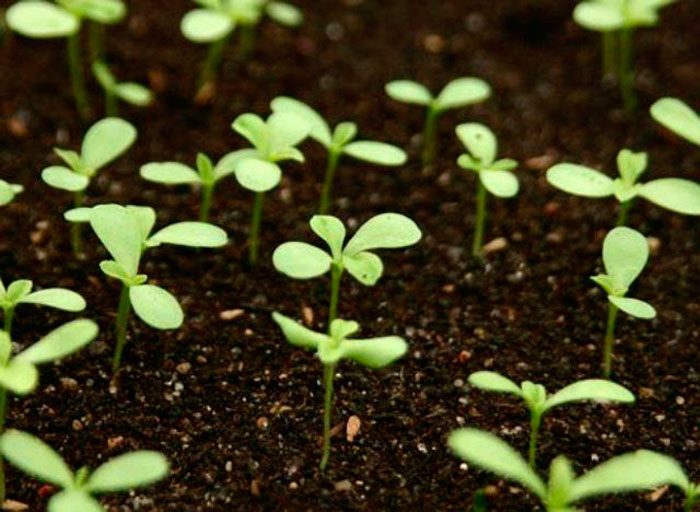
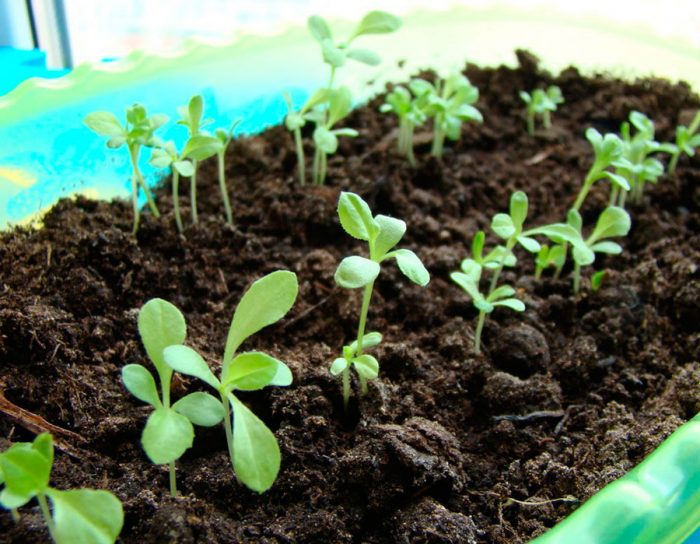

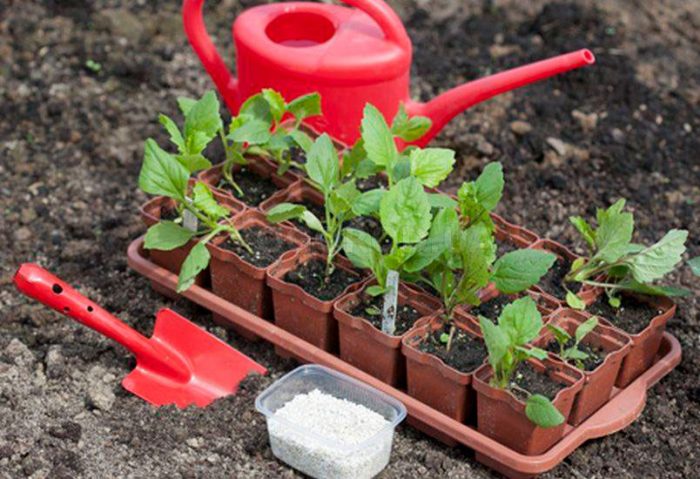
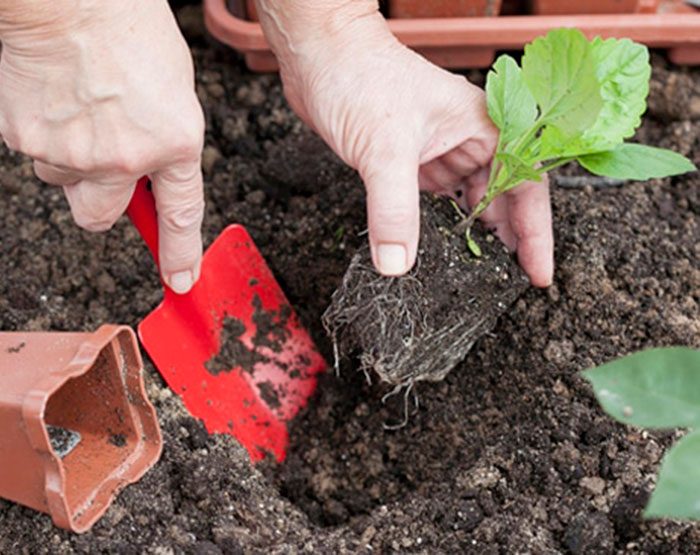

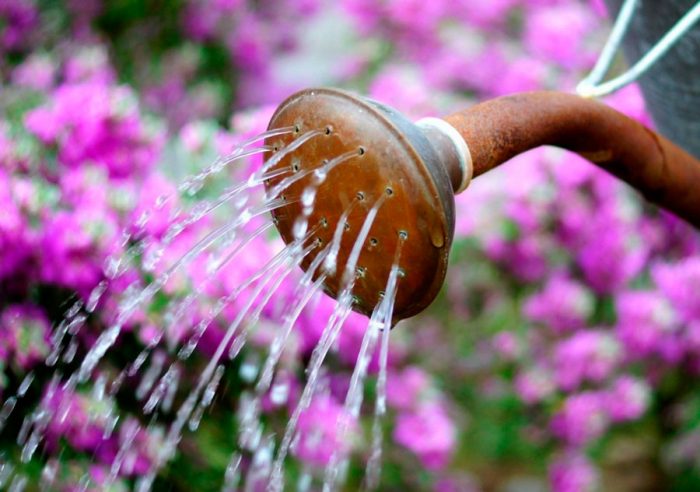
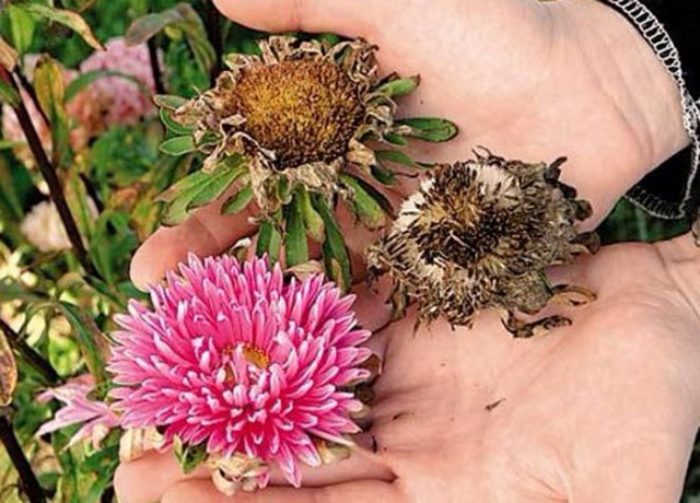
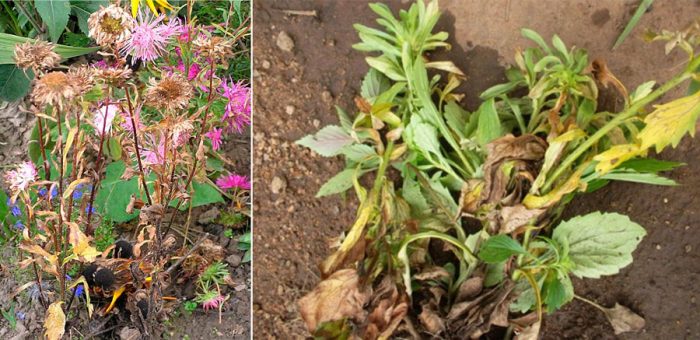
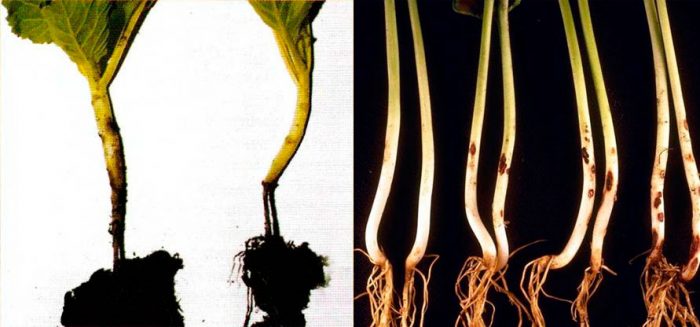



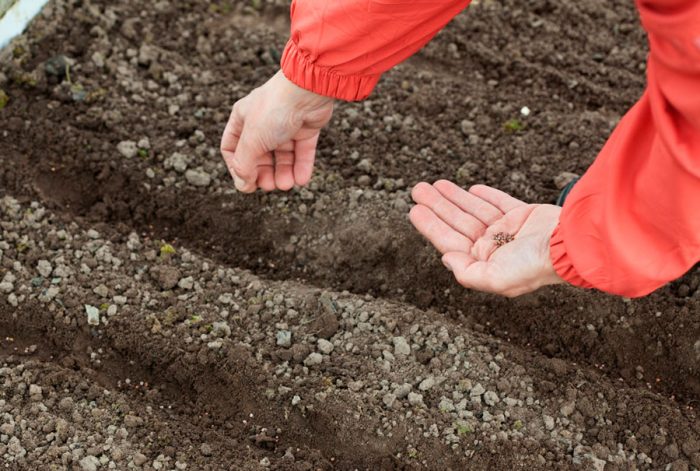

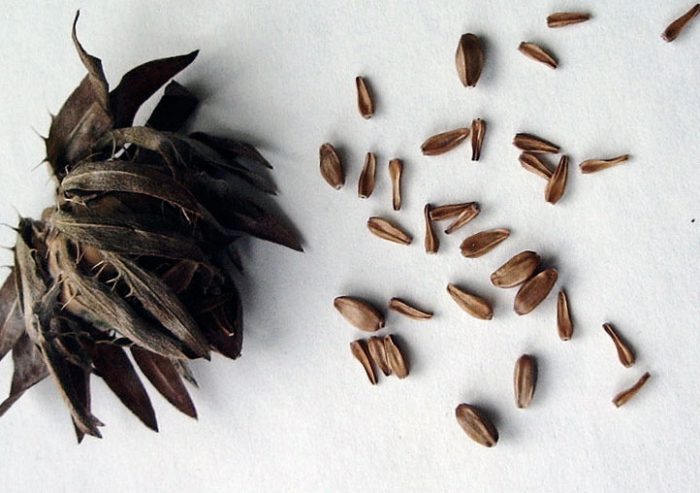
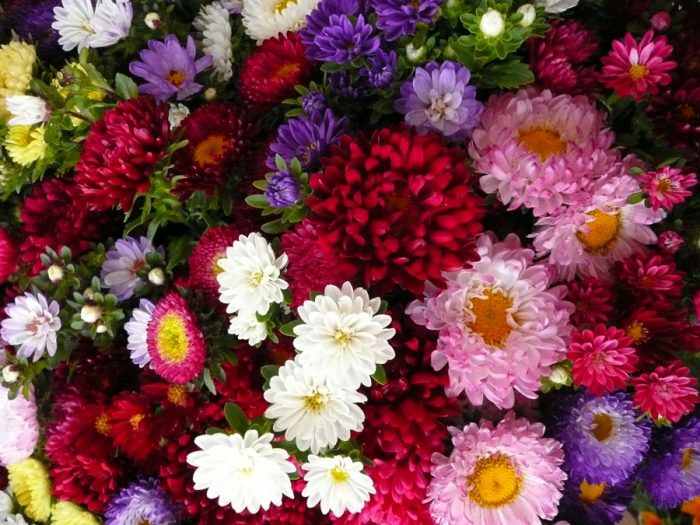
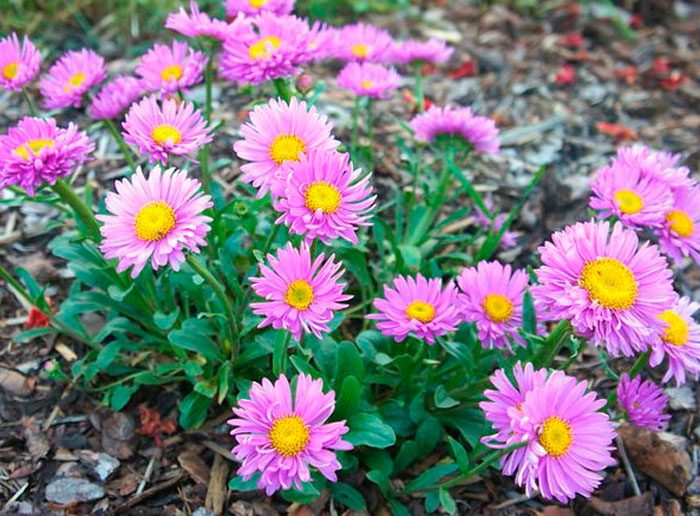
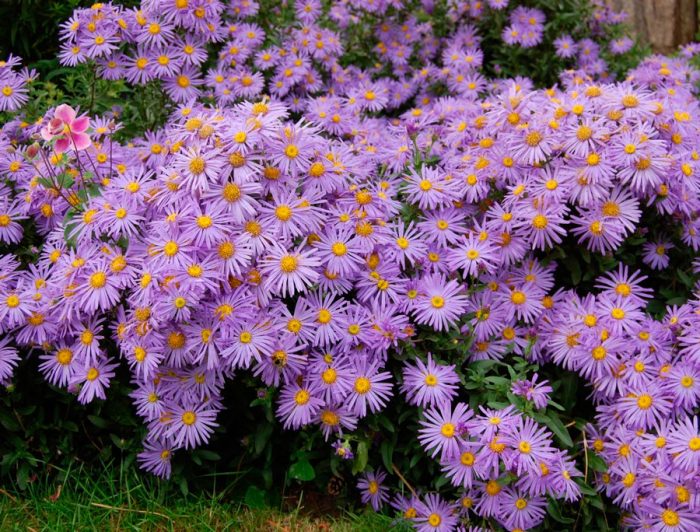
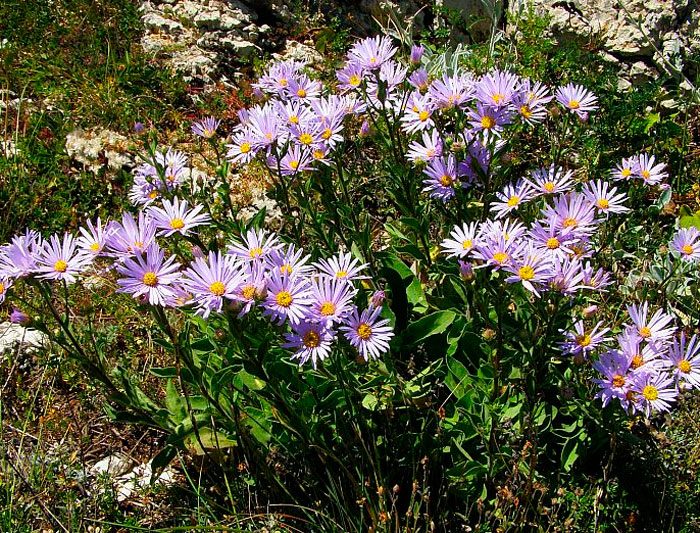
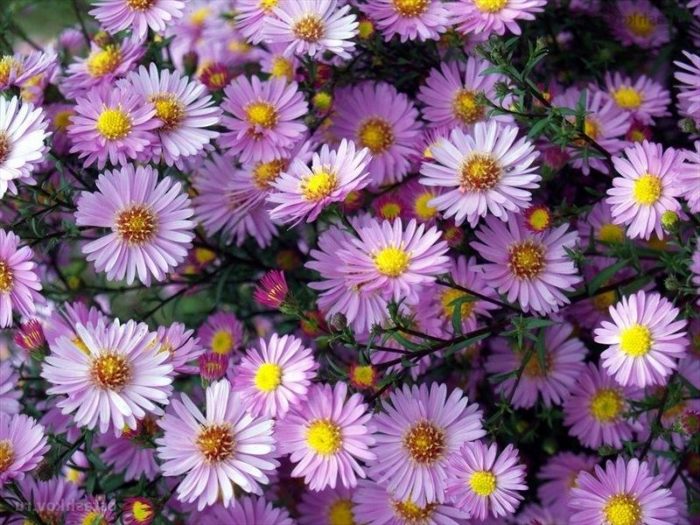
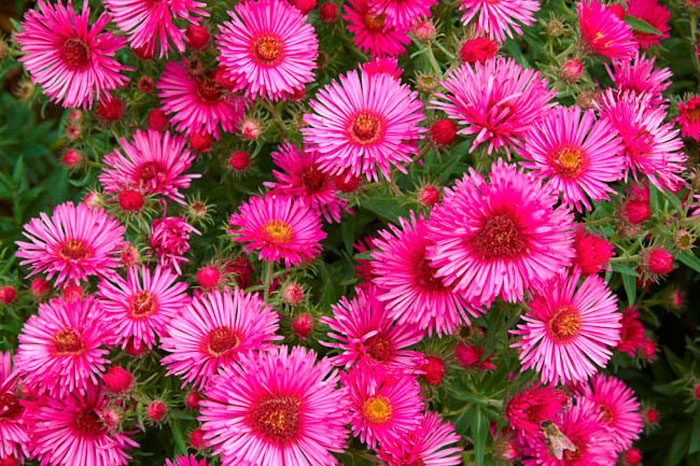
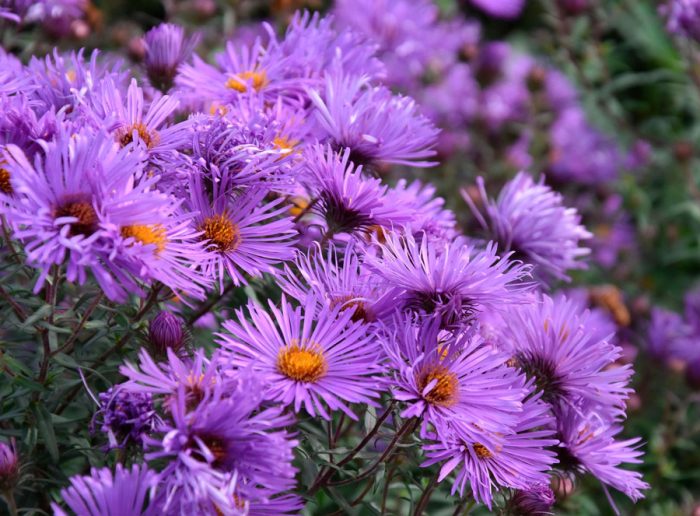
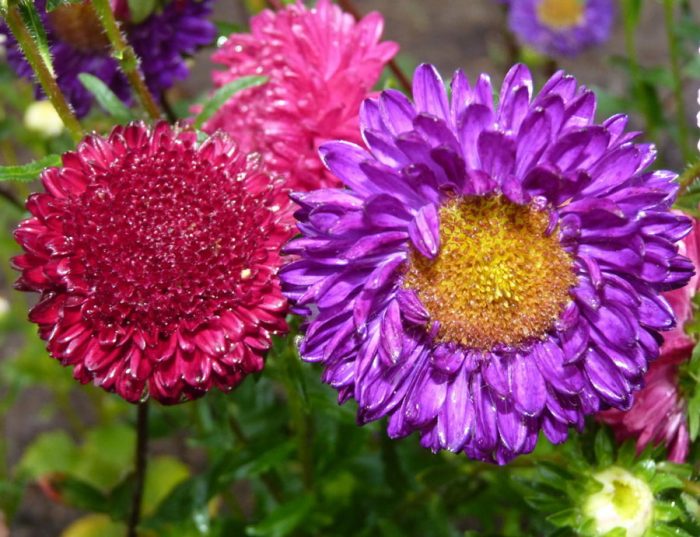











Thank you love asters